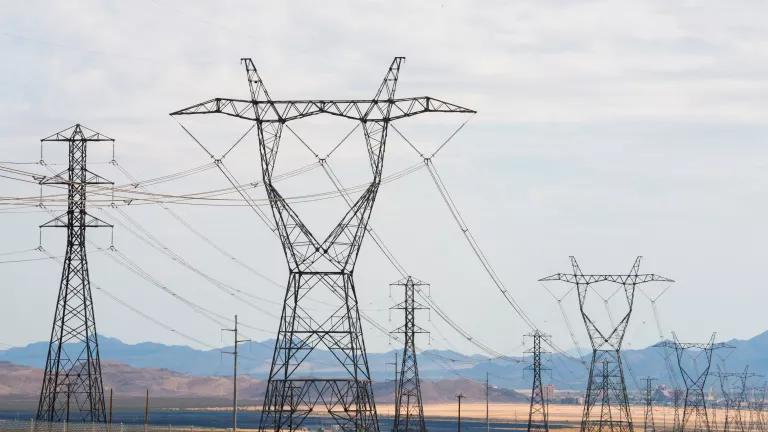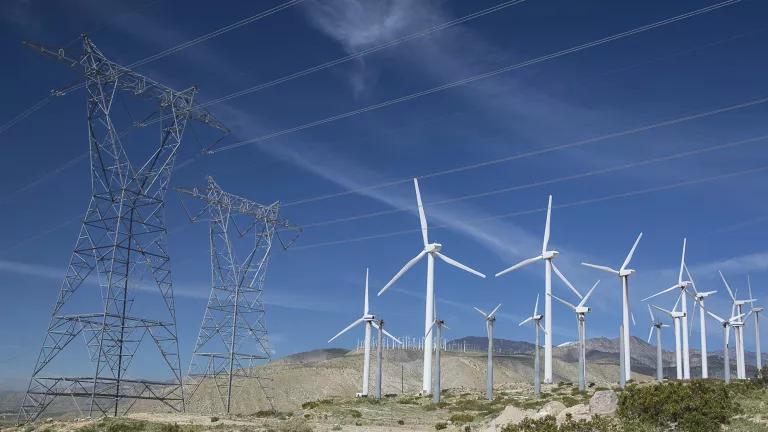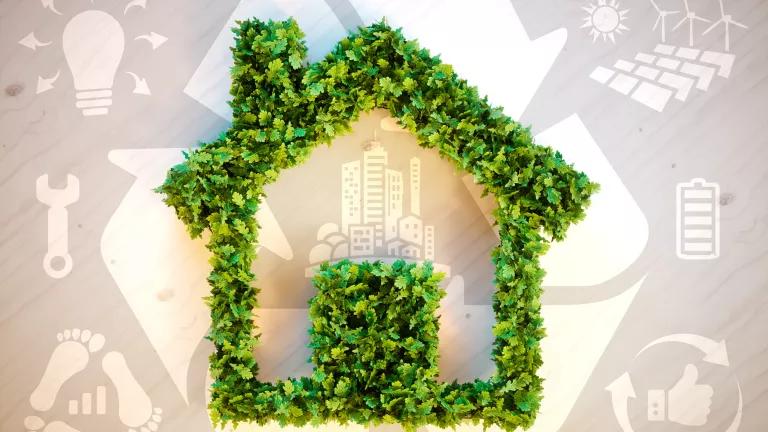CA's $1 Billion for Efficiency Now Open to Electrification
The California Public Utilities Commission unanimously voted to update an efficiency policy to allow access to funding if an appliance saves energy and reduces air pollution, regardless of the technology.

The billion dollars spent annually on energy efficiency in California is now also open to technologies that will help customers switch from gas to electricity for such uses as space heating and hot water. The California Public Utilities Commission unanimously voted today to update an efficiency policy to allow access to funding if an appliance saves energy and reduces air pollution, regardless of the technology.
This means there is now a clear path to roll out new programs that include efficient electric heating technologies largely powered by emissions-free resources like wind and solar, which will support the state’s climate goals and reduce costs. Measures that switch between energy sources will finally get to compete with all the other opportunities for saving energy in California. For example, a customer with an old gas furnace could previously only get a rebate for a moderately more efficient gas furnace. Now efficiency programs can offer rebates and other support to help customers switch to super-efficient electric heating technology.
The History
Since the 1990s the commission has restricted efficiency funding for projects that involve switching between types of energy; for example a rebate to help pay for moving from a standard gas water heater to a super-efficient electric water heater. At the time, regulators were concerned that customers switching fuels would increase air pollution, since the electric grid had fewer renewable energy sources than today. There were also fears of “fuel wars” between the single-fuel utilities in southern California, where a utility might try to steal customers using efficiency funds without providing a public benefit.
The policy, often referred to as the “three-prong test,” aimed to ensure that no fuel substitution was encouraged unless it saved energy, lowered costs, and avoided air pollution. While these goals are spot on and still vitally important today, the policy was so vague and restrictive that virtually no fuel substitution measures have been supported through the state’s energy efficiency programs over the last two decades. But thanks to the rapidly increasing renewable energy on California’s electric grid and advances in electric technology, opportunities now abound to save energy, lower costs, and reduce pollution by switching away from gas.
The Opportunity
California has made remarkable progress in growing clean energy's share of electricity generation, which has already exceeded the 2020 target of 33 percent coming from sources like wind and solar as set by the renewables portfolio standard, and has set a goal to reach 100 percent carbon-free electricity by 2045. Yet most buildings remain reliant on fossil fuels, particularly for burning them within buildings for space and water heating. About 90 percent of furnaces and hot water heaters in the state are fueled by gas or propane.
Buildings account for one-fourth of California’s climate-warming greenhouse gas emissions and recent research shows that building electrification using efficient space and water heating technologies that are commercially available today presents the lowest-cost and lowest-risk pathway for buildings to contribute to the state’s decarbonization goals. Another report found that electrification is already cost-effective for many Californians today.
Efficient electrification relies on heat pump technology, which uses electricity to collect and concentrate heat from its surroundings (even when it is very cold outside). That heat is then used to warm an indoor space or hot water in a tank. Since the electricity is used just to move heat around (not create it), the heat pump delivers energy that is two to four times greater than the energy required to operate it. This impressive performance dwarfs that of gas heaters. A heat pump can also be run in reverse to provide cooling.

Given this opportunity to both save energy and reduce emissions, 27 organizations filed a motion asking the commission to refresh its policy to better align with the original intent and the state’s climate goals. The commission created a public process to update the policy, and after two years of work, issued today’s decision opening the door to efficient electrification while still ensuring energy savings and environmental protection.
What's in the Decision
At its core, the decision clarifies how to demonstrate that a measure saves energy and reduces emissions. It also levels the playing field for all efficiency opportunities to qualify for funding by allowing fuel substitution to adhere to the same cost effectiveness requirements as other efficiency opportunities.
Key elements of the proposed decision include:
- It clarifies the “baseline” against which the proposed measure will calculate energy and emissions savings, and aligns this with what is required of other efficiency measures.
- It specifies that environmental impact will be measured in terms of carbon dioxide emissions.
- It updates the method for determining energy savings from the fuel source used, which will now account for the growing portion of renewable electricity (staff will further define this methodology within 90 days).
- It removes the cost-effectiveness requirement at the individual measure level, and instead applies cost-effectiveness requirements at the portfolio level (like all other efficiency measures). This means that some of the clean electric technologies that are new to the California market and not yet cost effective can receive early support to increase their market share and bring costs down, while the total portfolio of efficiency programs is still required to be cost effective and provide economic benefits to customers.
- It requires that the “new-fuel” customers fund the programs, and then makes appropriate adjustments to utilities’ energy-savings goals. For example, gas to electric heat pump conversions will be paid for by electric customers, and electric utilities will count the savings as part of their goals. Gas utilities’ energy-savings goals will be reduced to reflect the now unavailable savings from gas-to-gas appliance upgrades.
- Unfortunately, it does not allow funding for switching away from unregulated fuels such as propane and wood, leaving out a group of often rural and lower-income customers even though they pay into the electric efficiency funds. The decision says that these issues should be addressed in the commission’s proceeding on building decarbonization. This morning, both Commissioner Guzman Aceves and Commissioner Rechtschaffen expressed support for making sure these customers have access to support for switching away from dirty fuels in the future.
What’s Next?
Opening the opportunity to access the billion dollars in annual efficiency funding does not mean that programs will launch tomorrow or that the entirety of these fund will support fuel substitution to cleaner fuels—but it does give new technologies a huge opportunity to compete for funding. Now program administrators need to develop and propose a new set of programs, or integrate new measures into existing programs, so that funds can start flowing to the most promising technologies that save energy, cut pollution, and ultimately provide economic and environmental benefits to all Californians.



